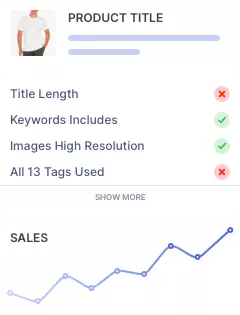What is UPC Codes: Guide 2024
All products need a particular code associated with them to track them properly. This universal number makes inventory management more efficient. That code is UPC, a Universal Product Code, which is a standardised 12-digit numeric code.

Represented by 12 vertical bars on the product’s packaging, UPC codes are used to make businesses more efficient, as they make it simpler for retailers to manage inventory, reduce checkout times and accumulate valuable sales data for analysis later on.
UPC codes are one of the focus variables sellers need to keep track of when listing their products inside a physical mall or a digital store like Etsy. These product codes work in pairs with listing assistant applications, such as the listing checker tool of Roketfy, that could enhance a product’s sale, bringing more profits to the seller.
What are the Different elements of the UPC Code?
A UPC is divided into three parts: manufacturer identification number, item number and check digit.
- Manufacturer Identification Number – Assigned by GS1, once a company pays a fee, the first five digits of the UPC represent the manufacturer identification number.
- Item Number – The next five digits on the UPC bar code represent the item number. It is a one-time usable unique number phased out once the product is discontinued.
- Check Digit – The final single digit is known as the Check Digit. Calculated by using the previous 11 digits, this 12th digit is used by the checkout scanner to validate the UPC code.
What are the types of UPC codes?
Different types of UPC codes are available, with UPC A being the most common since it represents the point of sale. Other types of UPC codes are:
ITF-14 Barcodes – These codes are specific to boxes and other materials placed inside warehouses and distribution centres and are used to identify cases, cartons and pallets.
GS1-128 barcodes – These codes contain the Global Trade Item Number (GTIN) and details like the expiration date.
GS1 Databar Codes – These are the codes used specifically for food and cosmetic-related items. Virtually much smaller than other codes listed here, these contain additional details about a product’s expiration, similar to GS1-128 barcodes.
QR Codes – These codes are meant for the customers. They are two-dimensional product codes linked to the website with more information about products. Instead of a specialised bar code reader, a simple smartphone often suffices with them.
How to get UPC Codes?
Getting UPC codes is quite easy, but there are still those who aren’t privy to this information. Here is a 4-step guide to give to help you:
Find out how many UPC codes you require for your business
Since you will need a UPC for each product, determine how many bar codes you require. Each box type of each product would have a different bar code. For instance, a box of cookies in three box sizes with three flavours and three shapes would require 3x3x3 = 27 UPC codes.
Buy UPC Codes from a Suitable Provider
You can go to GS1, a non-profit organisation based in New Jersey, for the UPC codes. If you’re looking for more convenience, companies like Amazon also offer UPC codes at an affordable price.
Pay Charges
The number of barcodes you want to buy will determine the UPC barcode charges. The code provider may also have a periodic fee model, which involves charging an initial fee and period charges that you’ll need to pay periodically.
Download UPC Codes
Download the UPCs on your device once you make the purchase. Proceed to print it on the packaging of the products.
What are The Advantages of the UPC Codes?
There are a number of advantages associated with UPC code, but two of the most common ones stand out:
Increasing Efficiency
Because the barcode scanners immediately pick UPC codes, there is no speed-related bottleneck between when the codes are scanned and when the details are entered. Instant information access and upload helps the sales operation become more efficient. Also, listing checkers provided by platforms like Roketfy can assess codes quickly, which makes it quicker for such tools to provide actionable information sellers need to boost their product’s rankings. You can also take a deep dive into other tools like AI writer and AI review to enhance your deliverability further.
Inventory Tracking
With UPC codes, inventory tracking becomes simpler. With the prospect of hand counting removed, so is the prevalence of human-generated errors. It makes inventory tracking more sufficient, giving sellers quicker access to their sale’s related information.
Make your Etsy Listing More Powerful with Roketfy.com
Sellers need to take care of multiple variables when listing their products inside a physical mall or a virtual realm of online stores. UPC codes are one of many such variables. This code, however, can help sellers gain valuable information related to sales and product research.
When combined with listing assistance like Roketfy, an innovating data-driven platform with a plethora of smart tools, UPC codes can become valuable assets for sellers, providing them with valuable insights that can help them take actionable measures to boost their sales.




